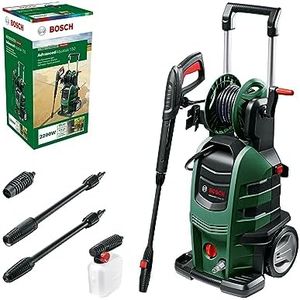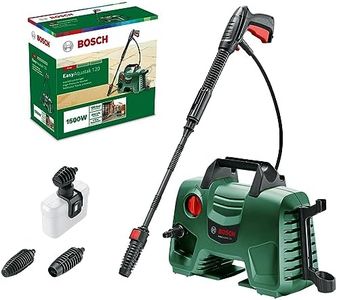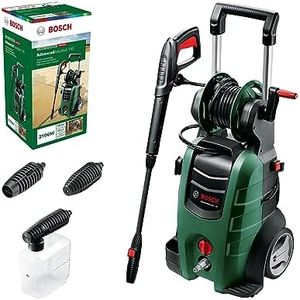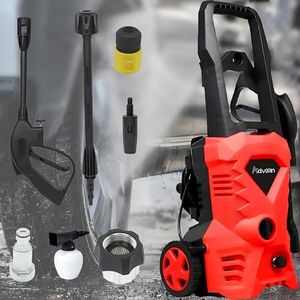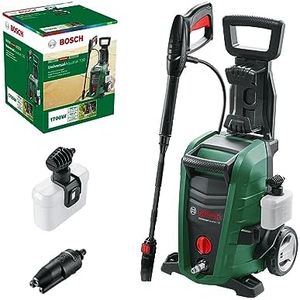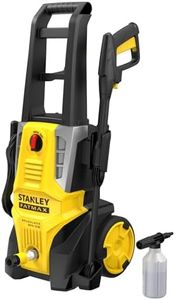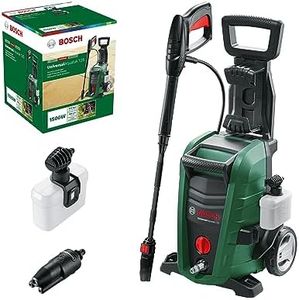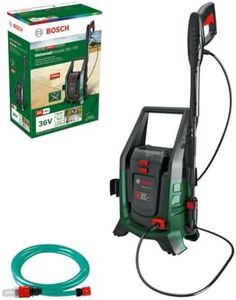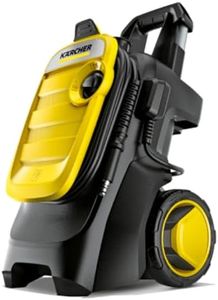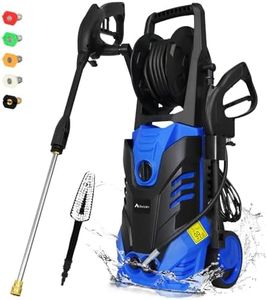We Use CookiesWe use cookies to enhance the security, performance,
functionality and for analytical and promotional activities. By continuing to browse this site you
are agreeing to our privacy policy
10 Best High Pressure Cleaner
From leading brands and best sellers available on the web.Buying Guide for the Best High Pressure Cleaner
Choosing a high-pressure cleaner means balancing power, convenience, and the types of cleaning tasks you plan to tackle. By understanding the main features and specifications, you can select a cleaner that's powerful enough for your needs without being unnecessarily heavy, complex, or difficult to use.Pressure (PSI/Bar)Pressure indicates how forcefully water is sprayed from the cleaner, measured in PSI (pounds per square inch) or Bar. Higher pressure makes it easier to remove stubborn dirt, mold, or grime. Generally, light-duty models start under 1500 PSI, which is good for small patios, bikes, or garden furniture. Medium-duty pressure (1500–2500 PSI) works well for driveways, decks, and fences, while heavy-duty models (over 2500 PSI) handle tough stains and larger areas like garage floors or exterior walls. Choose a pressure range that matches your regular cleaning tasks—going higher than needed can make the washer harder to control and might risk damaging delicate surfaces.
Water Flow (L/min or GPM)Water flow is measured in liters per minute (L/min) or gallons per minute (GPM) and determines how much dirt you can wash away in a given time. A higher flow rate means you can clean large surfaces faster. Light to medium tasks are usually fine with about 5–7 L/min (1.2–1.8 GPM), but for washing vehicles or rinsing big patios quickly, 8–10 L/min (2–2.5 GPM) or more can be helpful. Match the flow rate to the amount of area you plan to clean and how fast you want the job done.
Power SourceHigh-pressure cleaners come in electric or petrol/gas models. Electric washers tend to be quieter, easier to use, and suitable for light to medium tasks—they’re perfect for most home uses where a power outlet is nearby. Petrol models provide more power and are fully portable, so they’re suited for large properties or tougher jobs, but they’re heavier and require more maintenance. Decide which is more convenient given your property size and access to power.
Nozzle OptionsDifferent nozzles shape the water spray for various tasks. Most cleaners come with interchangeable nozzles or adjustable spray heads. Narrow-angle nozzles deliver stronger, concentrated jets for tough dirt, while wider angles are safer for cleaning cars or wood. Some systems make switching nozzles easier than others. Look for models that offer the right selection for your typical cleaning needs, making sure you get both powerful cleaning and gentle options.
Hose LengthHose length affects your working reach. Short hoses (under 5 meters) are best for compact areas, while longer ones (8 meters or more) let you clean wider spaces without moving the machine often. However, very long hoses can be cumbersome to store and may reduce water pressure. Think about where you'll use the cleaner and whether you need the extra range.
Portability and StorageThe weight, wheel design, and storage features of a high-pressure cleaner impact how easy it is to move and put away. Lightweight, compact units are best if you need to carry the cleaner up steps or store it in a small spot. Wheels and a good handle make heavier models easier to wheel around. Assess your physical space and how much you’ll need to move the cleaner when deciding what’s manageable for you.

